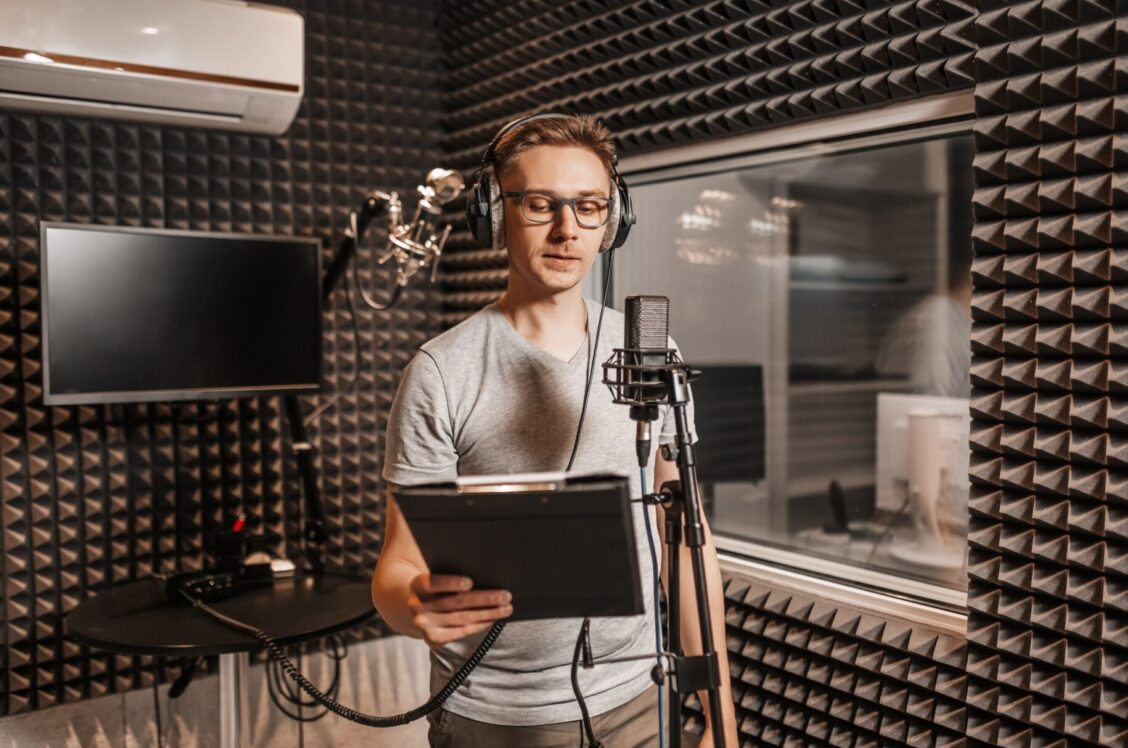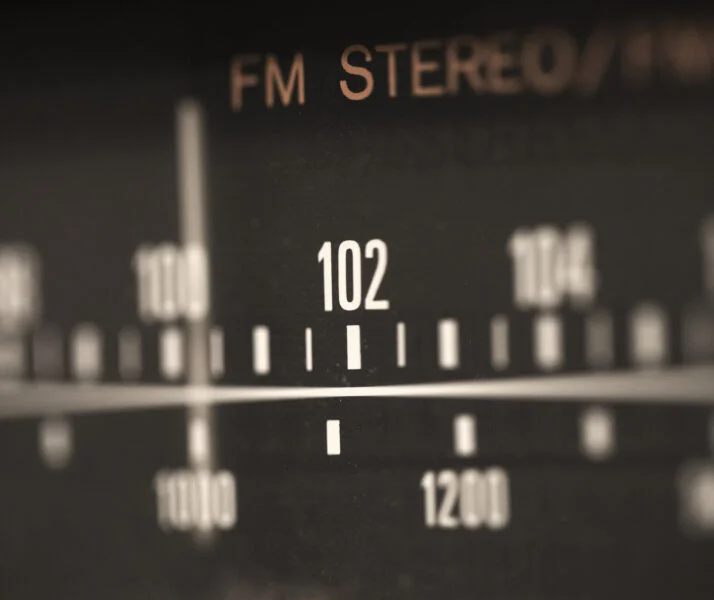
The competition for ad dollars is fierce. Every marketer’s goal is to allocate their ad budget to the right channels and inventory sources to support sustainable growth. Audio can play an important role in the media mix—but most media strategists are still figuring it out. Although Americans spend 31% of their time with digital audio, it still only accounts for 9% of ad spend. By bridging that 22% gap, savvy marketers have an opportunity to grab a little more ROI for their next campaign.
When done well, audio advertising is a powerful tool that can help marketers move the needle on their big goals. The popularity of audio has been growing since the COVID-19 pandemic and shows no signs of slowing, with a projected 1.7 billion monthly listeners this year. Audio advertising has adapted digitally with diverse formats such as podcasts and streaming radio, and it can be purchased directly or programmatically, delivered in real time, and highly targeted based on user location and behavior.
But does audio outperform other channels? Let’s dig in.
Audio vs. Linear TV
Linear TV advertising is delivered via traditional broadcast or cable television. Many of us are familiar with this traditional video commercial format that has been adapted to channels like connected TV (CTV), which is delivered through internet-connected devices. Linear TV once offered unparalleled reach, but it has been losing viewers for years. Traditional TV viewing time has shrunk 43% in the last decade, and by 2023, 64% of adults had cut the cord and canceled their cable or satellite TV subscriptions.
As linear TV viewing declines, marketers have shifted to digital mediums, which offers more nuanced targeting capabilities. Marketers can define more precise audience categories to reach with their messaging, exercising a degree of control that’s not possible with linear TV. With advertisers vying for the same linear TV audiences, the landscape is incredibly cluttered.
People may have never had as many entertainment options as they do today. This fragmentation is evident even in TV’s biggest events such as the Super Bowl. Once one of TV’s most-watched events, audiences have fluctuated in recent years, especially among those aged 18-49, although last year’s game was the third most-watched television show in history. Even TV’s most popular channels like NBC and Fox have experienced declines as viewers moved to other mediums. If you aim to reach a broad or older audience and focus on brand awareness, perception, and favorability, linear TV might still serve a purpose. Considering its reach, traditional TV costs remain relatively low, and CPMs fell by as much as 5% in 2023. However, if you want to reach a niche audience lower in the funnel, audio is your channel. Digital-based audio can target based on location, device type, genre, playlists, interest, demographics, and more. It also offers captive audiences that are actively engaged with the material, whereas TV is often just background noise.
Audio vs. CTV
CTV functions similarly to linear TV, though the ads run through internet-connected devices on streaming services such as Netflix or Hulu, instead of broadcast television. CTV offers greater targeting capabilities than linear TV and connects more meaningfully with younger demographics who have cut the cord (or never connected with linear TV to begin with).
One differentiator for audio compared to all forms of TV, CTV included, is that it reaches listeners when and where video cannot. That includes while they’re hiking, driving, or even vacationing. People choose audio formats to relax and unwind without guilt or screens. Whether it’s music, talk radio, or podcasts, audio is also great for people on the go, and most audio services are subscription-free. Most streaming services offer ad-free subscriptions, making them less viable for media campaigns. Although many are introducing ad-supported tiers, nearly one-third of millennials and Gen Z are not interested in watching ads on any streaming services—even for a better price.
At the same time, television viewers are overwhelmed. Nearly half say they have a hard time keeping up with all the new streaming video options. Conversely, viewers find connection in audio and consider podcasts to be 6.6 times more authentic and trustworthy than video. These mood-centric metrics mean that with audio, you’re connecting with the right people in the right moments.
Audio vs. Social Media
Social media advertising deploys ads through platforms such as Facebook, TikTok, Instagram, Snapchat, LinkedIn, and X, formerly known as Twitter, among others. Long a popular choice for building brand awareness and targeting niche audiences, social media ads have become increasingly expensive when compared to options like audio. Audio CPMs cost $10-30, while social CPMs run around $25-$35.
Social media platforms are still growing but at a much slower rate, about 2.5%. Comparatively, audio is experiencing a higher growth rate at 23%. This represents a massive opportunity for marketers to ride the audio wave, getting in early and tailoring their audio strategies to meet their unique and evolving needs. Audio is where people are migrating—they’re hungry for content and receptive to well-placed ads. A recent study found that 51% of listeners have replaced social media scrolling with audio.
Audio vs. Paid Search
Paid search remains one of the most popular forms of digital advertising, accounting for 39% of advertisers’ total 2023 budget on average. Advertisers pay to place their ads higher on relevant search engine results pages to drive traffic to their landing pages. One of the biggest benefits of paid search is its ability to target audiences when they are looking for something specific, which provides a clear intent signal. While paid search remains a mainstay for many brands, there are issues here, too. Google is the preeminent platform for paid search with more than 83% market share.
However, changes to the Google Ads platform in recent years have increased complexity for advertisers and made it more difficult to manage their accounts as they grow. The paid search ecosystem has also become more crowded, inflating costs by as much as 17% in a single year. Many brands have made better use of their budgets elsewhere. Additionally, many marketers fail to make the connection between paid search impressions (brand and non-brand) and the positive halo impact other channels have on those impressions, especially audio. For example, search demand is partially driven by exposure to a brand or service via another platform. It’s important to understand the incremental conversion lift that audio and other channels have on search results.
Further complicating the search landscape, many users have reported a decrease in ad relevance and an increase in random and misaligned ads as AI drives more ad decisioning—all of which can eat up ad budgets.
It is critical for advertisers to work with partners who are experts in navigating this rapidly changing environment. A specialized agency like ARM has focused on audio for more than 25 years, and we can help advertisers maneuver all aspects of this medium, and help brands understand how to measure channel attribution appropriately. With audio’s cost efficiency, incredible targeting abilities, and ability to connect with listeners authentically, it’s a powerful driver of business growth, it’s a channel that compliments search extremely well
Balance your media mix with audio
Search isn’t the only channel that audio compliments meaningfully. In fact, one of the best aspects of audio advertising is that it plays nice with all the other channels discussed here. It has been proven to boost sales by as much as 55% when coupled with other mediums such as TV, paid search, and social.
Marketers who integrate audio into their media mix know that it’s a win-win. Audio has a direct impact, but it also amplifies and compliments other media. The results are synergistic, with big returns. In today’s cluttered ad landscape, reach is simply not enough; brands must also create meaningful moments for their audiences. Audio connects with people’s hearts and minds, holds attention longer than social media, and delivers performance for brands of all kinds, no matter their budget.
Ready to put audio to work for you? Let’s talk through your goals.


